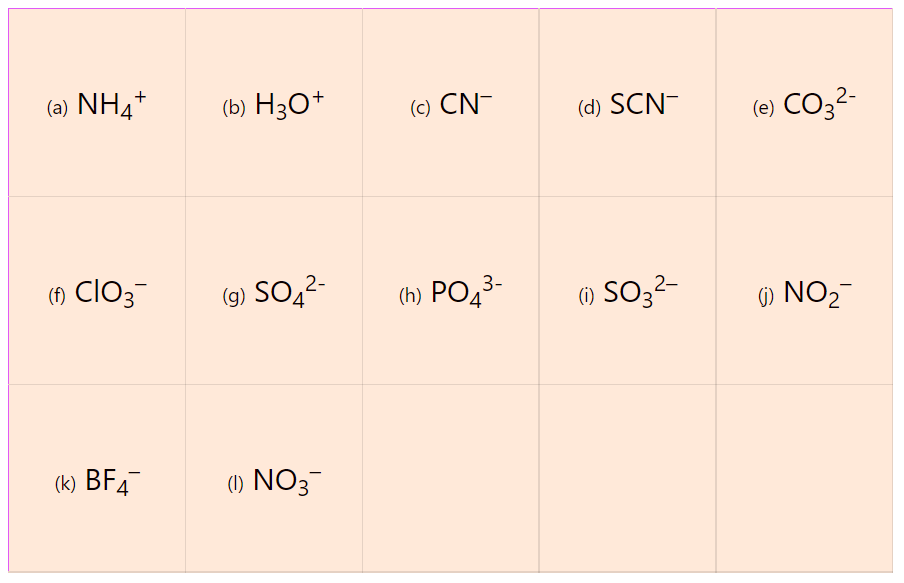We know that the formation of covalent bonds is achieved by an overlap of orbitals between two atoms that share a pair of valence electrons. The bonds are most often shown with either two dots or a line, and these representations are called Lewis symbols or Lewis structures.
For example:

So the bonds can be represented either with a line or a pair of electrons (two dots) and therefore, we can say that Lewis structures are electron-dot representations for molecules. Once we know this concept, it is relatively easy to interpret the structure. However, coming up with a reasonable Lewis structure from a formula is not as obvious. There are a few things to keep in mind when drawing a Lewis structure. These are the correct placement of the atoms in the molecule, determining the number of electrons involved in the bonding and non-bonding interactions, and keeping track of these electrons.
While hydrogen and the following elements have few electrons, the elements below the second row of the periodic table, have quite complex electron configurations and it may get challenging to find the right way of involving them in chemical bonding. To make this easier and avoid any possible confusion, Lewis suggested focusing only on the valence electrons since the covalent bonds are formed by the valence electrons.
As a reminder, valence electrons are the ones in the outermost energy level (principal quantum number – n). For example, the electron configuration of carbon is 1s22s22p2. Out of these, the ones in the second energy level, n=2, are the 2s22p2 four electrons. So, carbon, being in group 4, has four valance electrons and that is true for all the other elements:
The number of valence electrons corresponds to the group number of the element.
For example, the following are the valence electrons for each element.
Na: 1, Mg: 2, B: 3, C: 4, N: 5.
Drawing Lewis Structures
In short, these are the steps you need to follow for drawing a Lewis structure:
1. Write the correct skeletal structure for the molecule.
* Hydrogen atoms are always terminal (only one bond)
* Put more electronegative elements in terminal positions
2. Sum the valence electrons from all the atoms.
3. Use a pair of electrons to form a bond between each pair of bound atoms.
4. Add the remaining electrons to satisfy the octet for a more electronegative atom first.
5. If any atoms lack an octet, make a double or triple bond to give them an octet.
Now, let’s go over these in more detail by drawing the Lewis structure of HCl.
- The first thing in drawing a Lewis structure is to place the atoms in the correct location and since we only have two atoms here, we can only place them next to each other:
H Cl
And in general, as well, remember to always put the hydrogen on the periphery because it has one electron and can only make one bond.
You can see the bonding patterns of the most common elements in organic chemistry in the valency and formal charges post:
- Next, sum the valence electrons. One from the H (group 1) and 7 from the Cl (group 7). Therefore, we have 8 valance electrons:

- Out of these eight, two electrons must be used to make a bond between the atoms:

This leaves us with six electrons:

- Remember to put the remaining electrons on the more electronegative atom first and then on the other(s) if more electrons are still available.
So, six electrons go to the Cl:

These electrons are called non-bonding electrons or lone pairs of electrons. And instead of saying the Cl has six electrons, even though it is not wrong to say so, we normally count them in pairs and say that the Cl has three lone pairs of electrons. The lone pairs are important because they define the geometry of the molecule and participate in chemical reactions.
Finally, check to make sure that the following elements obey the octet rule which applies to C, N, O, F, and all the other halogens. The octet rule states that some elements tend to have eight electrons around them, whether by bonding pattern or in their ionic form.
The bonding (shared) electrons are included in the electron count of each element:

Hydrogen does not follow the octet rule since it has one electron and can only form one bond which is referred to as the Duet rule.
In Lewis structures, the bonds can be shown either by dots or lines. For example, the previous structures can also be shown as follows:

Double and Triple Bonds in Lewis Structures
Let’s now draw the Lewis structure of CO2. As always, the first step is to place the atoms correctly. Oxygen being more electronegative goes on the periphery:
![]()
For the valence electrons, we have 4 from the carbon and 2 x 6 = 12 from two oxygens, giving 16 valence electrons in total:

One bond between the carbon and each oxygen takes 4 electrons and we have 12 electrons left:

Place 6 on each oxygen and check for the octets:

The oxygens have 8 electrons. However, the carbon has only four and in these cases, you need to move one of the lone pairs, from the element that has an octet, to the element lacking an octet to make another bond:

The same is done for the other carbon since it still lacks an octet:

At this point, all the atoms have 8 electrons. Notice that there are four electrons between the carbon and each oxygen which means they make two double bonds:

Lewis Structure of Organic molecules
For the third part, let’s see how to work around a problem with a larger organic molecule where the placement of atoms is given and you need to add the bonds and any possible lone pairs:
For example, draw an acceptable Lewis structure for the following compound:

- Count the total number of valence electrons:

- Make a bond between each neighboring atom:

- Count the remaining electrons and place them on the atoms in the order of their electronegativity:

- Identify atoms lacking octet:

- Move one lone pair from the oxygen to make a double band:

And this gives us the Lewis structure for this organic molecule.
Now, let’s pay attention to something interesting here. You may wonder why we did not move the lone pair from the nitrogen instead of the oxygen in the following way:

That is a good question and the answer is that it can be done, either way, i.e. we could have moved either of these lone pairs:

A and B are both correct Lewis structures of this molecule and are called resonance structures. Resonance structures can be interconverted to one another by moving some of the electrons:

The arrows that show the movement of electrons in resonance forms are called curved arrows which are used more often in organic chemistry.
Notice also that the oxygen and the nitrogen are charged in the resonance form B. These are called formal charges.
Check the following posts with practice problems for these important concepts:
Check this 90-question, Multiple-Choice Quiz on Chemical Bonding:
Check Also
- Lewis Dot Symbols
- The Ionic Bond
- The Covalent Bond
- Sigma and Pi Bonds
- Electronegativity and Bond Polarity
- The Octet Rule
- Formal Charges
- Lewis Structures Practice Problems
- Resonance Structures
- The VSEPR Model
- VSEPR Theory Practice Problems
- Hybridization of Atomic Orbitals
- sp, sp2, sp3, sp3d, and sp3d2Hybridization Practice Problems
Practice
Determine the Lewis structures of the following molecules:
| (a) BF3 | (b) CH2O | (c) HCN | (d) BeCl2 | (e) CH2Cl2 |
| (f) SOCl2 | (g) SO2 | (h) PCl5 | (i) XeO4 | (j) NCl3 |
| (k) SiCl4 | (l) SF2 | (m) H2S | (n) SO3 | (o) COCl2 |
| (p) PCl3 | (q) OF2 | (r) BrF5 | (s) N2O | (t) SF6 |
| (u) POCl3 | (x) XeF2 | (y) XeF4 | (z) C2H2 | (A-1) NO2 |
Determine the Lewis structure of each ion: (a) NH4+, (b) H3O+, (c) CN– (d) SCN–, (e) CO32-, (f) ClO3–, (g) SO42- (h) PO43- (i) SO32– (j) NO2– (k) BF4– (l) NO3–.
| (a) NH4+ | (b) H3O+ | (c) CN– | (d) SCN– | (e) CO32- |
| (f) ClO3– | (g) SO42- | (h) PO43- | (i) SO32– | (j) NO2– |
| (k) BF4– | (l) NO3– | (m) ClO4– |
Lewis structures of Organic Compounds
Select the correct Lewis structure for the formula C3H8

Select the correct Lewis structure for each of the following carbocation:
C3H7+









